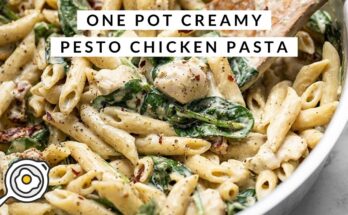Egg Curry Recipe: Egg curry is the go-to comfort food for many Indian households. It’s a soul-satisfying dish where hard-boiled eggs swim in a spicy, flavorful, and aromatic curry. The richness of the gravy, combined with the protein punch of eggs, makes this dish both nutritious and delicious. Egg curry comes in various regional variations—each with its own twist, from creamy North Indian styles to coconut-infused South Indian versions.
You don’t have to be a seasoned chef to master this dish. With basic pantry ingredients and a little patience, anyone can create a lip-smacking egg curry that hits all the right notes. Whether you’re cooking for a quick family dinner or entertaining guests, egg curry never fails to impress.
Why Egg Curry is a Favorite in Many Households
Egg curry ticks all the boxes—it’s easy to make, budget-friendly, packed with protein, and incredibly satisfying. It doesn’t demand fancy ingredients or cooking skills. And the best part? You can tailor the spice levels to suit everyone at the table.
One of the main reasons this dish is loved universally is its adaptability. You can cook it dry or with a rich gravy. Add coconut milk for a creamy version, or go with green chilies for a fiery kick. Plus, eggs are almost always in the fridge, making it a go-to dish when you’re short on time or ingredients.
Ingredients Required for Egg Curry
Main Ingredients
Here’s what you’ll need to make a classic North Indian-style egg curry:
- 6 Eggs – hard-boiled and peeled
- 2 Onions – finely chopped
- 2 Tomatoes – pureed or finely chopped
- 1 tsp Ginger-Garlic Paste
- 2-3 Green Chilies – slit
- 2 tbsp Oil – vegetable or mustard oil
- 1 tsp Cumin Seeds
- 1 Bay Leaf
- 1 tsp Turmeric Powder
- 1 tsp Red Chili Powder
- 1½ tsp Coriander Powder
- 1 tsp Garam Masala
- Salt – to taste
- Fresh Coriander Leaves – for garnish
- Water – for the curry base
These simple ingredients create a deliciously rich and spicy gravy that clings beautifully to the boiled eggs.
Optional Add-ons for Enhanced Flavor
While the basic ingredients make a fantastic curry, adding a few extras can elevate the taste:
- Kasuri Methi (dried fenugreek leaves) – adds a smoky aroma
- Cream or Yogurt – for a rich, restaurant-style finish
- Coconut Milk – for a Kerala-style twist
- Whole Spices like Cloves and Cardamom – for extra aroma
- Butter or Ghee – for a silkier texture
If you love a deeper flavor, try frying the boiled eggs until golden brown before adding them to the gravy. This not only adds texture but also enhances the taste dramatically.
Step-by-Step Cooking Instructions
Step 1: Boiling the Eggs Perfectly
Start with placing the eggs in a saucepan filled with water. Add a pinch of salt and bring it to a gentle boil. Let them cook for about 10-12 minutes on medium heat. Once done, drain and place them in cold water for a few minutes—this helps in easy peeling.
Peel the eggs and make small slits on the surface so they soak in the curry flavors better. You can even lightly fry them in a teaspoon of oil for a crisp outer layer.
Step 2: Preparing the Onion-Tomato Base
Heat 2 tablespoons of oil in a pan. Add cumin seeds and a bay leaf, allowing them to sizzle and release their aroma. Toss in the chopped onions and sauté till golden brown. This step is crucial—take your time to cook the onions properly, as they form the backbone of the curry.
Next, add the ginger-garlic paste and green chilies. Fry until the raw smell disappears. Then, stir in the pureed tomatoes and cook on medium heat until the oil begins to separate from the masala. This step ensures the tomatoes are cooked thoroughly and the base becomes rich and thick.
Step 3: Blending the Spices
Once your onion-tomato masala is ready, it’s time to spice things up. Add turmeric, red chili powder, coriander powder, and salt. Cook for a few minutes, stirring continuously so the spices don’t burn. If the mixture seems dry, sprinkle some water.
This stage is where the magic begins. Your kitchen will start to smell incredible, and the masala will deepen in color, turning into a luscious curry base. You can taste the masala at this point to adjust the seasoning.
Step 4: Simmering Everything Together
Now, gently place the boiled (or fried) eggs into the curry base. Stir gently so they’re well coated with the masala. Add enough water to get the desired curry consistency and bring it to a boil.
Lower the heat and let it simmer for 10 minutes so the eggs absorb all the rich flavors. Add garam masala towards the end, mix gently, and garnish with freshly chopped coriander leaves.
And just like that, your egg curry is ready to be devoured!
Tips and Tricks for the Best Egg Curry
Achieving the Right Consistency
When it comes to curry, consistency is everything. Some like it thick and gravy-rich, while others prefer a thinner, soup-like version that soaks into rice or bread. The best part about egg curry is that you can control this with the amount of water and how long you simmer it.
Start with just enough water to loosen up your masala. Once the eggs are added, simmering the curry helps all the flavors blend beautifully. If you’re going for a thicker, restaurant-style curry, let it reduce a bit longer, stirring occasionally so it doesn’t stick to the bottom.
A great tip here is to mash a small portion of the onion-tomato base before adding the eggs. This not only thickens the curry naturally but also enhances its richness. Want a creamier texture? Stir in a tablespoon of cream or yogurt after turning off the heat—it adds a luxurious finish without overpowering the spices.
Also, using the right cookware matters. A heavy-bottomed pan or kadhai retains heat evenly, helping your curry simmer perfectly without burning. Always keep the flame on low while simmering to allow the flavors to develop slowly.
Making the Curry More Flavorful
You don’t need to be a Michelin-star chef to make your egg curry taste heavenly. Just a few tweaks can make a big difference. For starters, roasting your spices slightly before adding them brings out their essential oils, enhancing aroma and taste.
One game-changing trick is to roast and crush some whole spices like cumin, coriander, and fennel seeds. Add this mix toward the end for an earthy, slightly sweet touch. Similarly, frying the boiled eggs until golden brown adds a layer of texture and a nutty flavor that beautifully contrasts the creamy curry.
Don’t skip the fresh coriander—it adds freshness and color to the finished dish. You can also finish with a drizzle of ghee or a squeeze of lime to elevate the flavor profile further.
Remember: good food is about balance. If your curry feels too spicy, add a pinch of sugar or a dash of cream. Too bland? Sprinkle in some garam masala or a few drops of lemon juice to brighten things up.
Serving Suggestions
What Goes Best with Egg Curry?
Egg curry is versatile enough to be paired with a wide variety of staples. Most commonly, it’s served with hot steamed rice—the soft texture of rice soaks up the spicy, flavorful gravy, making every bite pure bliss.
But rice isn’t your only option. If you want a more indulgent meal, try it with jeera rice or a fragrant basmati pilaf. The subtle spices in these rice dishes complement the curry without overpowering it.
In many North Indian households, egg curry is often served with rotis, parathas, or naan. The bread is perfect for scooping up the thick curry and eggs, creating a satisfying mouthful. If you’re feeling fancy, pair it with buttery garlic naan or flaky lachha parathas for a restaurant-style experience at home.
Want something lighter? Try it with plain dosa, appam, or even bread slices if you’re in a pinch. The versatility of egg curry ensures it never feels out of place on your plate, no matter how you serve it.
Ideal Drinks and Sides to Complement
To complete the meal, a chilled beverage and a few side dishes can make all the difference. A tall glass of buttermilk or a mild yogurt-based lassi can help balance the spices in the curry while aiding digestion.
As for sides, a crisp salad of cucumber, onions, and tomatoes with a dash of lemon juice is refreshing and balances out the richness of the curry. You can also prepare a simple raita (yogurt dip) with mint, cucumber, and roasted cumin—it cools your palate and complements the heat of the spices beautifully.
Papad (crispy lentil wafers) and pickles are also excellent additions. They add crunch and an extra punch of flavor that rounds out the whole meal experience.
Feeling fancy? Add a dry side dish like aloo fry or bhindi masala to the table. These sides offer a nice contrast in texture and elevate your egg curry meal from simple to sensational.
Nutritional Benefits of Egg Curry
A High-Protein, Balanced Meal
Egg curry isn’t just a treat for your taste buds—it’s a nutritious powerhouse too. Eggs are one of the most affordable and high-quality sources of protein. Each egg provides about 6 grams of protein, packed with essential amino acids your body needs for muscle repair, energy, and overall function.
When combined with the rich curry base made from tomatoes, onions, and spices, you get more than just taste. Tomatoes add vitamin C and antioxidants, onions contribute to heart health, and spices like turmeric offer anti-inflammatory benefits.
The dish becomes even more balanced when paired with a fiber-rich carb like brown rice or whole wheat roti. It’s filling, energizing, and a great option for those looking to maintain muscle mass, lose weight, or simply eat a wholesome, home-cooked meal.
For anyone following a vegetarian diet but open to eggs (ovo-vegetarian), egg curry is a staple protein source. It’s also a great way to introduce kids to spicier foods, as you can control the heat and serve it with mild sides like plain rice or yogurt.
Egg Curry Variations Across India
Egg curry isn’t a one-size-fits-all dish—it changes flavor and style across Indian states.
- Punjabi Egg Curry: Rich, creamy, and spiced with garam masala and butter or cream.
- South Indian Egg Curry: Uses coconut milk, curry leaves, and mustard seeds for a tropical twist.
- Bengali Dimer Dalna: A slightly sweet and spicy version cooked in mustard oil with potatoes.
- Kerala Mutta Curry: Infused with curry leaves, fennel seeds, and coconut, often served with appam or dosa.
- Chettinad Egg Curry: Fiery and flavorful, loaded with peppercorns, cinnamon, and star anise.
Each regional style brings something unique to the table, making egg curry a dish you’ll never get bored of.
Common Mistakes to Avoid
Overcooking or Underseasoning
Even a simple dish like egg curry can go wrong if you’re not careful. One of the most common errors is overcooking the eggs—they become rubbery and lose their creamy texture. Stick to the 10–12-minute boil rule and always let them cool before peeling.
Another mistake is underseasoning. Don’t hesitate to taste your curry as you go. Add a pinch of salt or a dash of spice if needed. Undercooked onions or raw tomato paste can also ruin the base flavor. Make sure to sauté thoroughly until the oil separates.
Also, be cautious with water—adding too much can make your curry watery and bland. Always let the gravy reduce to concentrate the flavors before serving.
Skipping the Frying Step (Optional but Effective)
A game-changer for many egg curry lovers is frying the boiled eggs before adding them to the curry. It creates a golden crust and adds depth to the flavor. Skipping this step doesn’t ruin the dish, but including it elevates it.
Just a quick fry in hot oil for 2–3 minutes until the eggs blister or brown slightly is enough. You can even coat them lightly in turmeric and chili powder before frying for an extra kick. Try this once and you might never go back to plain boiled eggs in your curry again!
Storage and Reheating Tips
How to Store Leftover Egg Curry
Got leftovers? Egg curry stores really well. Just let it cool completely before transferring it to an airtight container. Store in the fridge for up to 3 days.
Avoid keeping the curry out at room temperature for too long, especially in warm climates, as eggs can spoil quickly. Always refrigerate within two hours of cooking.
When storing, you can also separate the curry and eggs if you prefer. This helps keep the eggs from becoming too soft or rubbery after reheating.
Reheating Without Losing Flavor
The best way to reheat egg curry is on the stovetop. Add a splash of water or a little cream to loosen the gravy, then simmer gently until hot. Stir carefully to avoid breaking the eggs.
Microwaving is okay too, but make sure to use a microwave-safe container and cover it loosely. Reheat in 1-minute intervals, stirring in between to ensure even heating.
Avoid overheating, as this can make the eggs rubbery and the curry overly thick or oily. A low and slow approach is always best for reheating curries.
FAQs about Egg Curry Recipe
Q1: Can I make egg curry without onions and garlic?
Yes! You can make a simple egg curry using just tomatoes, ginger, and spices. It’s often referred to as “satvik” or Jain-style curry and is both light and flavorful.
Q2: How can I make egg curry less spicy?
Reduce the amount of chili powder and green chilies. You can also add a spoonful of cream, yogurt, or coconut milk to mellow out the heat.
Q3: Is egg curry good for weight loss?
Egg curry is high in protein and can be part of a weight-loss diet when paired with whole grains and cooked with minimal oil. Avoid heavy cream or too much ghee if you’re watching calories.
Q4: Can I freeze egg curry?
It’s best enjoyed fresh or refrigerated for a few days. Freezing can make the eggs rubbery, but the curry base alone can be frozen and reused with freshly boiled eggs.
Q5: What’s the best oil to use for egg curry?
Mustard oil adds an authentic, pungent flavor, especially in Bengali versions. However, you can use vegetable oil, sunflower oil, or even ghee for a rich taste.
Conclusion
Egg curry is more than just a quick dinner fix—it’s comfort in a bowl. From its bold, spicy aroma to its rich and velvety texture, every spoonful is a celebration of flavor and simplicity. Whether you’re cooking for your family, entertaining guests, or treating yourself to a solo meal, this dish delivers every time.
It’s endlessly versatile, incredibly nutritious, and customizable to your taste. Try out the variations, tweak the spices, and experiment with what works best for you. Once you’ve nailed the basics, you’ll have a reliable recipe in your back pocket that’s bound to impress.
So the next time you’ve got a few eggs and a craving for something hearty, skip the takeout and make yourself a hot, homemade egg curry. Trust me, your taste buds will thank you.



